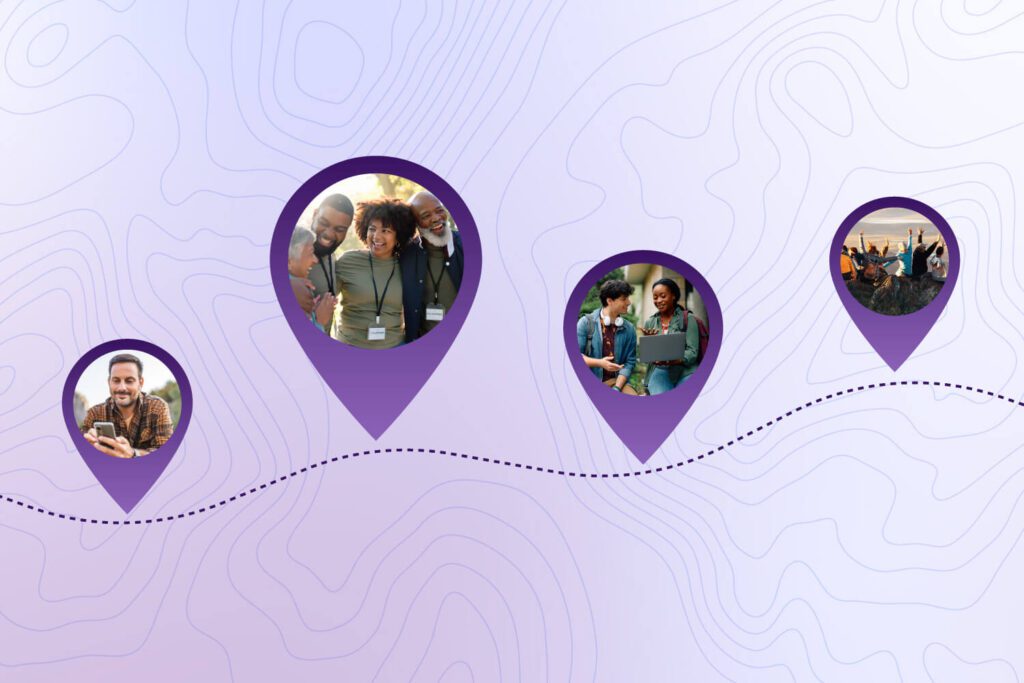Planned giving can be a nonprofit organization’s most powerful revenue source. Along with major gifts, these donations make up the largest individual contributions made to nonprofit organizations, providing financial sustainability for the future. Plus, they allow donors to leave a lasting legacy by arranging to support your nonprofit’s purpose beyond their lifetime.
Establishing a bequest program helps your nonprofit organization make the most of planned gifts. Bequests, which are contributions arranged through a supporter’s will or living trust, are the most common planned giving vehicle and the easiest for donors to understand. While other types of planned gifts are also valuable, starting with a bequest program allows your organization to begin cultivating legacy donors and explore other gift opportunities as your program expands.
In this guide, we’ll walk through four simple steps to start a bequest program that streamlines your efforts as you actively pursue these critical funding opportunities.
1. Establish a bequest system
For your bequest program to be successful, you first need to have the right system in place. Ensure your nonprofit has financial policies in place that ensure compliance and dictate the types of gifts you can receive. These policies include:- Gift acceptance policy outlines the types of gifts your nonprofit organization can and can’t accept from donors. For example, some nonprofit organizations refuse to accept the donation of livestock in accordance with this type of policy.
- Conflict of interest policy ensures that your organization remains compliant and that no staff or board members receive direct financial benefits from the organization’s decisions.
- Investment policy concerns the donation of stocks and investments. To determine the best way to handle this (or to invest funds from other bequests you receive), you’ll need to have an investment policy.
2. Consult with your board
Your nonprofit’s board plays a key role in securing bequests. While their main duties are overseeing your hiring plans and approving your marketing budget, they also contribute to the success of your program in many ways. For example:- Board members are often well-connected and may be able to introduce you to prospective legacy donors.
- Members represent your nonprofit organization in the community, so they can spread the word about your bequest program by networking with prospective donors.
- Because of their long-term dedication to your organization, some board members could be inclined to arrange bequests themselves.
3. Conduct planned giving prospect research
While your board is often a good starting point for cultivating bequests, conducting prospect research maximizes the number of planned donors your organization can reach. Planned giving prospect research process is similar to major donor prospecting in that you use donor data and specialized research tools to find top candidates. However, identifying the best prospects for your bequest program requires you to examine slightly different data points, including the following:- Wealth markers. Although net income can be an indicator, real estate holdings and investment holdings are especially important for planned giving prospect research. Not only can those assets increase in value over time, but your donors may also choose to donate those assets in the future.
- Affinity markers. The more a donor engages with your nonprofit organization, the more likely they are to consider making a bequest. Look for recurring mid-level donors who also volunteer, attend fundraising events, or participate in advocacy activities at your organization.
- Demographics. Older donors with a long history of involvement with your nonprofit organization tend to be the best candidates for bequests. They are the most likely to consider their will in earnest and to hear out your solicitations.
4. Market your bequest program
After you’ve identified and segmented your planned giving prospects, begin reaching out to them to inform them about your program. Use these tips for marketing your bequest program effectively:- Brand it as a legacy giving program. Rather than emphasizing the program’s legal or commitment aspects with the terms “bequest program” or “planned giving program,” use the term “legacy giving program” to focus on the main benefit donors receive by joining.
- Use a multi-channel marketing strategy. Promoting your bequest program on several platforms provides you with multiple touchpoints for engaging more prospects. Create a page on your nonprofit organization’s website dedicated to bequest information, add a planned giving section to your email newsletter, and send direct mail messages explaining the program in detail.
- Personalize your outreach. Contact your top prospects individually using their preferred communication channel. Address them by name, reference their past involvement, and set up a meeting to discuss your program and continue building relationships with them.
Ready to Get Started?




